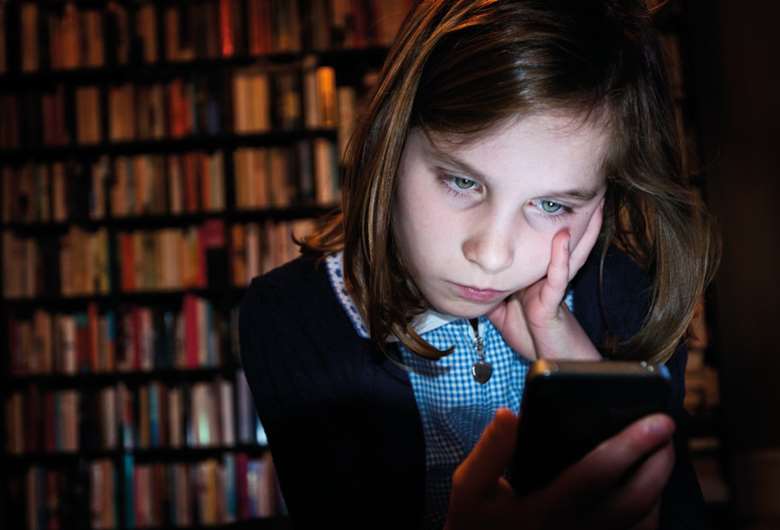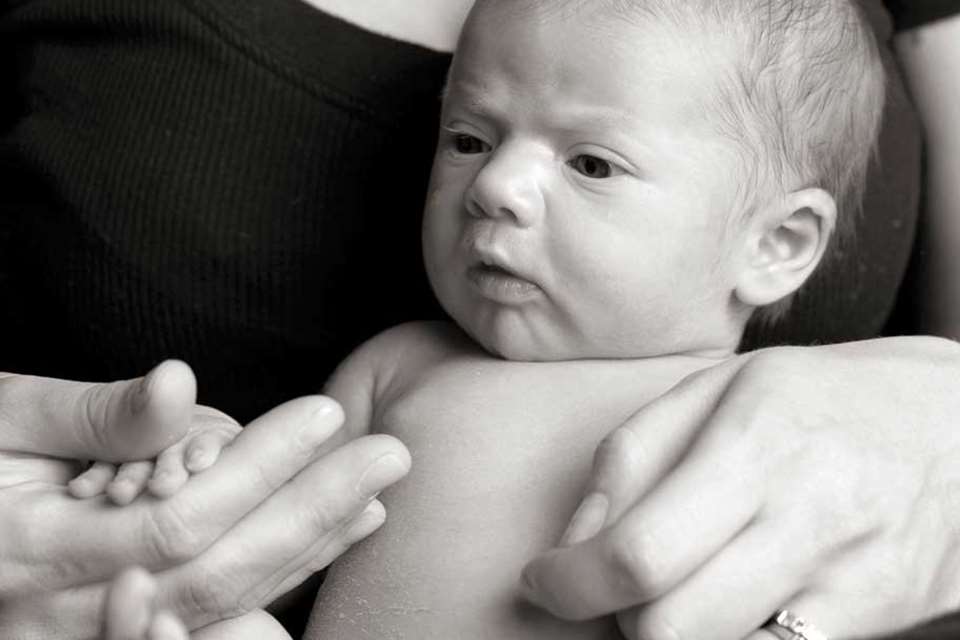Troubled teens left in limbo
Charlotte Goddard
Monday, May 30, 2016
The ‘epidemic’ requires a mix of early intervention and later support services, finds Charlotte Goddard

The mental health of teenagers is a growing concern worldwide. Barely a day goes by without coverage of new statistics, with some talking of a mental health ‘epidemic’ in this age group. Those working in early years could be forgiven for looking askance at what seems to be in store for their young children.
A study from The Lancet published in May cites self-harm as the second-leading cause of death among ten- to 24-year-olds worldwide, while in the same month the Institute for Public Policy Research (IPPR) issued a report on the ‘crisis affecting children and young people’s mental health in England’. In April the Government’s mental health champion for schools, Natasha Devon, told a head teachers’ conference there has been a 70 per cent rise in mental illness among the current generation of young people, and linked this to the current testing regime in schools, among other things. Ms Devon’s role has since been axed.
But opinion is divided on whether there is actually a significant increase in mental health problems, or whether other factors are involved. Dr Max Davie, mental health lead for the Royal College of Paediatrics and Child Health, says, ‘There is an absence of good data, so it is not possible to say conclusively that there is a “crisis” in teenage mental health compared with other age groups.
‘However, we know that the number of hospital admissions across the UK for teenagers with eating disorders has nearly doubled in the past three years, and between 2001 and 2011, admissions for young people who self-harm rose by 68 per cent.’
Nick Harrop, campaigns manager at charity YoungMinds, agrees the statistics are concerning. ‘There is more awareness of mental health now, but there is also compelling evidence that more young people are experiencing mental health problems,’ he says. ‘For example, the number of young people arriving in A&E with mental health problems has doubled since 2010. And a recent survey of more than 300 head teachers found that more than half had seen a large increase in anxiety and stress among pupils.’
However, not all research has found an increase. Dr Helen Sharpe, a lecturer at the University of Edinburgh, has co-authored studies of teenagers’ mental health in England. Comparing problems between 2009 and 2014, she found that levels remained relatively stable, with a slight fall in behavioural problems among young men and an increase in emotional problems in girls.
‘One of our working hypotheses is that behavioural problems tend to cause more disruption and draw more attention, while someone having emotional problems is easier to overlook,’ she says. ‘However, a later survey we ran with school staff seemed to say that staff are able to spot problems, but the lack of capacity and funding in mental health services is preventing them from accessing specialist support.’
NORMAL TENSIONS
Frank Furedi, professor of sociology at the University of Kent and author of Paranoid Parenting, believes the perceived rise is down to the way the normal tensions and apprehensions faced by pupils are regularly seen as medical and mental health problems.
‘From a very young age, everything that children do which is troublesome is now given a medical label such as ADHD,’ he says. ‘Schools encourage children to use mental health vocabulary, and the consequence is children begin to play the part, and no longer treat adversity as a challenge they can take in their stride. We have created a mental health crisis – there is one, but it is culturally constructed.’
Dr Stephen Scott is director of the National Academy for Parenting Research at King’s College London, and chair of the Association for Child and Adolescent Mental Health. He believes that while some indicators relating to mental health have increased, such as the number of under-14s presenting at A&E for self-harm, much of this has been driven by budget cuts, and in general it is the public’s awareness that has grown.
‘The number of articles on mental health in the media has exploded in the past year, and it has become more acceptable to talk about mental health issues,’ he says. Campaigns such as Heads Together, launched on 16 May, are working to tackle stigma and raising awareness.
A rise in bullying and self-esteem issues driven by social media, academic pressure, poverty, family breakdown and cuts to vital support and early intervention services have all been cited as potential causes of teenage mental ill-health, but more research is needed to find out how these issues work together to contribute to what the IPPR report calls ‘a perfect storm’.
Dr Davie says, ‘A report from think-tank Centre Forum stated that anybody could suffer mental ill-health, with the latest research showing those who are socially disadvantaged or in residential care are at increased risk, as are boys who have absent fathers, young people involved in gangs and people from affluent backgrounds, who are at risk of issues such as substance misuse, depression and eating disorders.’
Sarah Kendrick, head of services (south) operations at Place2Be, a national charity providing support to children in schools, comments, ‘Today’s pressures are exacerbated by social media, which is potentially around the clock – and we know that many children are striving to succeed. There are also changes in family life, and the greater availability of drugs and alcohol adds to the pressures.’
In adolescence, the part of the brain that attracts people to behaviours that feel rewarding is growing, says Ms Kendrick. ‘In teenagers, these behaviours are often associated with risk. Young people sometimes engage in social media in activity that is hard for adults to understand, such as sexting, which can often lead to intense feelings of shame or guilt that can be hard for the young person to manage. These can get expressed in self-harm or further risky behaviour such as drug or alcohol use.’
The seeds of some mental health issues can be sown in early childhood and even before birth. Dr Vivette Glover, professor of perinatal psychobiology at Imperial College London, has carried out research into links between a mother’s stress and problems faced in adolescence. ‘If the mother is anxious or depressed when pregnant, that can lead to an increased risk of mental health problems at 13 and 18,’ she says.
FILLING THE GAPS
The Department of Health says it is working to fill the gaps and establish the true extent of mental ill-health in the population. A survey gathering data from two- to 19-year-olds will be published in 2018, examining the impact of issues such as cyberbullying.
A Department of Health spokesperson says: ‘Children’s mental health is a priority for this Government and we know that intervening early can have a lasting impact. That’s why we are putting a record £1.4 billion into transforming the mental health support available to young people in every area of the country and are working with NHS England to strengthen the links between schools and mental health services.’
Some £28 million of that funding is being spent on extending and expanding the Children and Young People’s Improving Access to Psychological Therapies programme, which aims to improve Child and Adolescent Mental Health Services (CAMHS) in the community. The Government is also investing £1.5 million into developing peer-support networks in schools so children feel empowered to help one another.
Despite this investment, however, most in the sector agree that whether or not individual cases are rising, there is a crisis in mental health services for teenagers and it is driven by budget cuts.
Dr Scott believes cuts are driving many of the mental health indicators that are showing an increase. ‘The Government has cut grants to local authorities that provided CAMHS services, which leads to young people having to go to A&E, for example,’ he says.
The cuts are also raising the bar for accessing services. ‘When young people are struggling, it can be extremely difficult for them to get support,’ says YoungMinds’ Mr Harrop. ‘CAMHS are a postcode lottery, with unacceptably long waiting times in many areas. Because the threshold for treatment is so high, problems often escalate before young people get help.’
It is imperative that the Government’s investment is spent where it is intended, he adds. ‘Many local authorities have repeatedly had their budgets slashed on things like social workers, support programmes for parents, educational psychologists and targeted mental health services in schools. This has put a huge burden on services further up the chain, which simply can’t cope with the demand. Draining money from early intervention is incredibly short-sighted, and just stores up problems for the future.’
Dr Scott agrees that early intervention can help prevent some problems later in life. However, he warns against taking money away from support services to fund early intervention. ‘The belief in the current educational system is that early intervention will somehow get rid of the need for later services, but that is not necessarily true,’ he says. ‘Some things turn on in adolescence, like depression, and schizophrenia doesn’t usually start until 18.’
‘Without investment in both early intervention and crisis care, the situation can only deteriorate over time,’ says Ms Kendrick. ‘CAMHS need to be properly resourced, and that will take time to address. In the meantime, it’s crucial that we make the most of what resources are available.’
[asset_library_tag 1192,Download the PDF]






